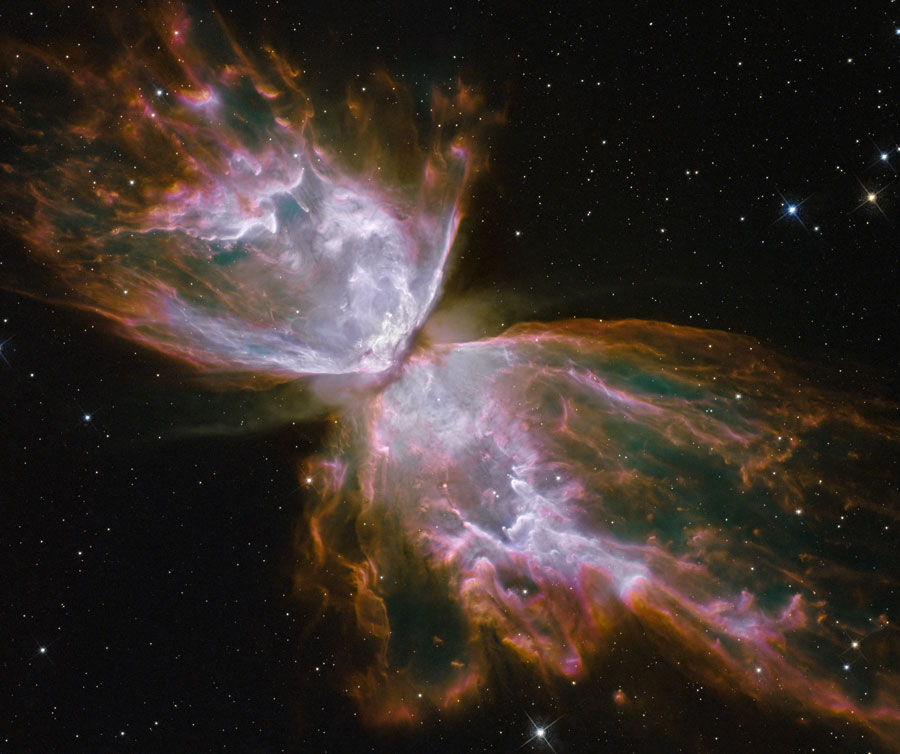Esta tem mesmo de ser vista numa versão maior: clique sobre ela!
The Butterfly Nebula from Hubble
Explanation:
Few butterflies have a wingspan this big.
The bright clusters and nebulae of planet Earth's night sky are often
named for
flowers or
insects, and
NGC 6302 is no exception.
With an estimated surface temperature of about 250,000 degrees C,
the central star of this particular
planetary nebula is exceptionally
hot though -- shining brightly in ultraviolet light but hidden from
direct view by a dense torus of dust.
This
dramatically detailed close-up of the dying star's nebula was recorded by the Hubble Space Telescope soon after it was
upgraded in 2009.
Cutting across a bright cavity of ionized gas, the
dust torus surrounding the central star is near
the center of this view, almost edge-on to the line-of-sight.
Molecular hydrogen
has been detected in the hot star's dusty cosmic shroud.
NGC 6302 lies about 4,000 light-years away in the
arachnologically correct constellation of the
Scorpion
(Scorpius).

Sem comentários:
Enviar um comentário